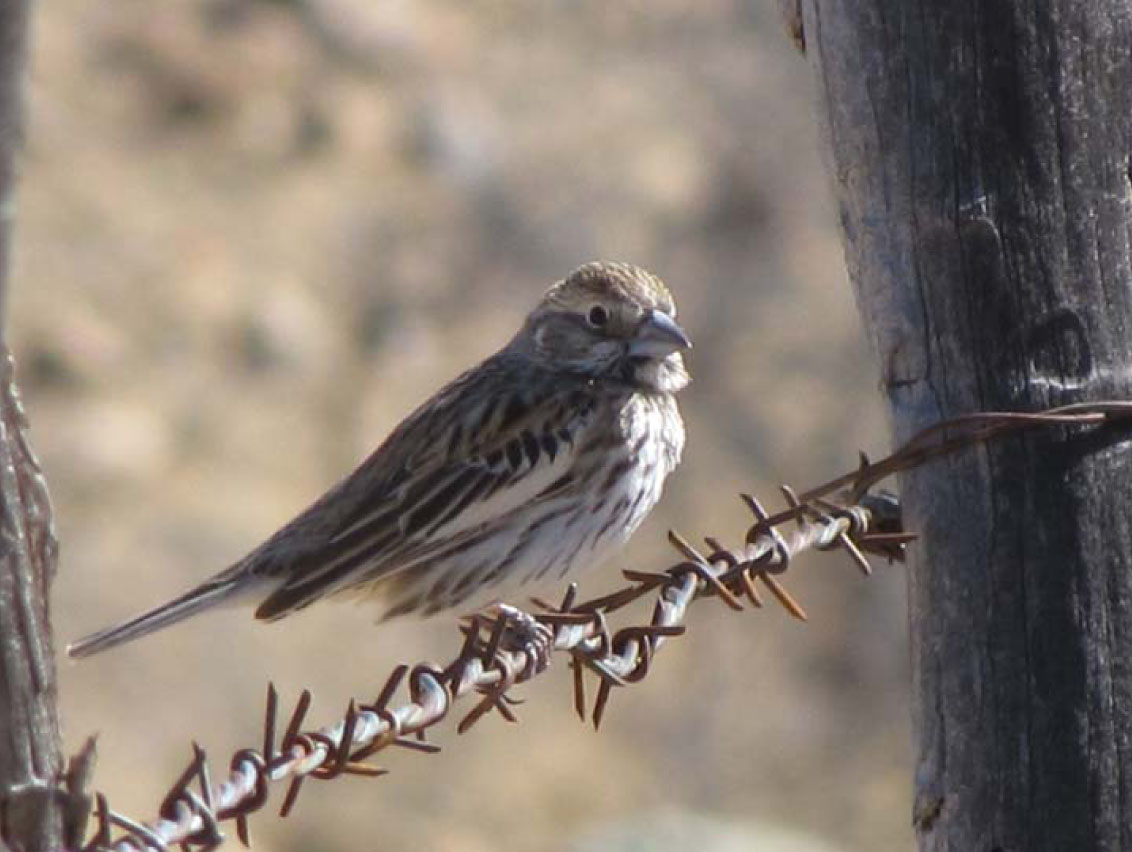Rocky Mountain Bird Observatory has released the first-ever conservation plan for grassland bird species that winter in the Chihuahuan Desert, with support from the Rio Grande Joint Venture and American Bird Conservancy. The plan provides a wide range of science-based information to guide everyone from on-the-ground land managers to program- and policy-level decision-makers in maintaining and improving habitat for grassland bird species of high conservation concern.

The Lark Bunting is undergoing the steepest decline in the grassland bird guild, a decline that ranks second (only after the Bank Swallow) among all birds in the North American Breeding Bird Survey. Photo by Jose Hugo Martinez.
Grassland birds have declined more steeply than any other group of North American birds. To address this concern, the Chihuahuan Desert Grassland Bird Conservation Plan focuses on providing an understanding of the distribution, abundance and habitat associations of five declining grassland bird species: Baird’s Sparrow, Chestnut-collared Longspur, Lark Bunting, Sprague’s Pipit and Loggerhead Shrike. All five of these species appear on the U.S. Fish & Wildlife Service’s Birds of Conservation Concern list for Bird Conservation Region 35, which encompasses the Chihuahuan Desert in the southwestern U.S. and northern Mexico.
Specifically, the plan demonstrates how species’ densities respond to habitat conditions, such as grass, shrub and forb cover, and management actions that can affect habitat, such as restoration, grazing and shrub removal. The plan also articulates how many individuals of each species are potentially supported today in each of 10 grassland priority conservation areas in the Chihuahuan Desert.
RMBO scientists used bird and vegetation monitoring data to develop the recommendations in the conservation plan. The data was collected by RMBO and its partners over the past six years, thanks to support from the U.S. Fish & Wildlife Service’s Neotropical Migratory Bird Conservation Act, the National Fish & Wildlife Foundation, the U.S. Forest Service International Program, the Commission for Environmental Cooperation, the University of Nuevo León, The Nature Conservancy and others.
The ability to produce this plan is a testament to the added values that can be derived from long-term monitoring programs. The plan also helps RMBO achieve its mission of bird and habitat conservation by using science to inform management decisions that impact migratory bird populations across North America.
Download the Chihuahuan Desert Grassland Bird Conservation Plan.


